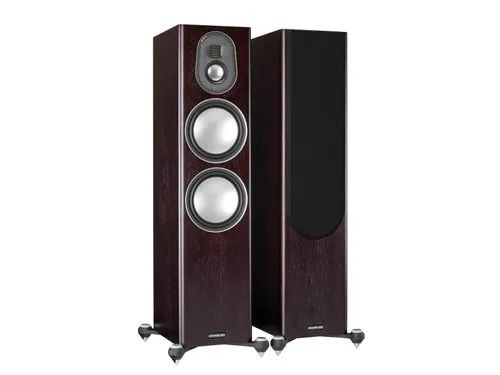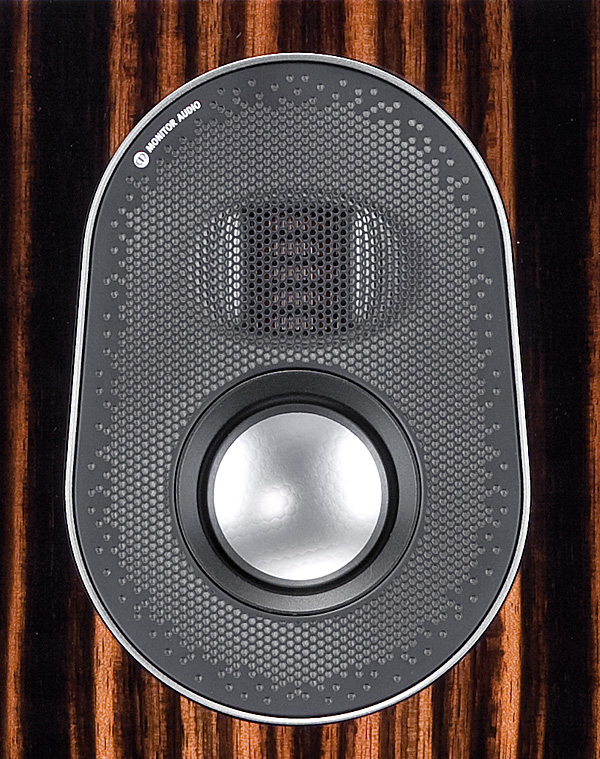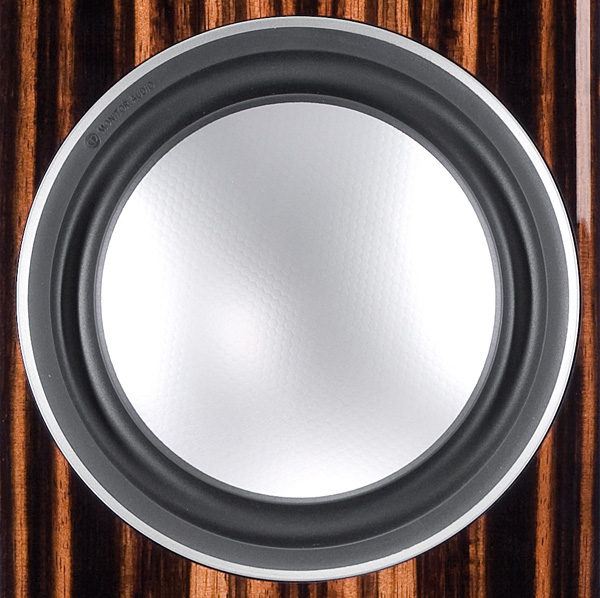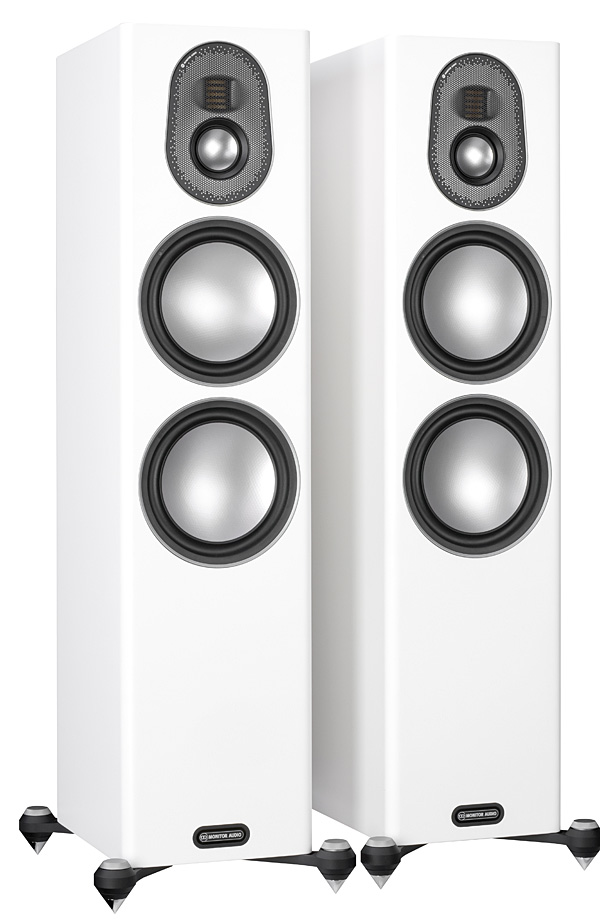
Monitor Audio Gold 300 loudspeaker - Thomas J. Norton
Share
Collected from - www.stereophile.com
Monitor Audio Gold 300 loudspeaker
About a year after settling into my new house, I decided to buy a pair of Monitor Audio Silver 10 floorstanding loudspeakers, which I had reviewed in 2014 for our sister publication Sound & Vision. I wound up buying three of them, with the intention of cannibalizing the drivers and crossover from one to make my own three-way center-channel speaker. But that project was long delayed, and I never got around to doing anything with the third Silver 10: It now sits in a closet as a spare. (The similar but smaller Silver 8 and its replacement, the new Silver 300, were both reviewed for Stereophile by Kal Rubinson, footnote 1.)
Visit the website for more info : www.thesoundfactor.com
In any event, the Silver 10s have been my reference for the past three years, despite being superseded by the Silver 500s in Monitor Audio's most recent Silver line. But there are usually other loudspeakers in for review—an occupational hazard in my line of work—and when that happens, the Silver 10s are set aside.
This time around, the "other loudspeaker" is the Silver 300's big brother, the new Monitor Audio Gold 300 ($7000/pair). It's the flagship of Monitor Audio's Gold line—now the fifth generation of Golds, all models of which have been extensively upgraded. All of the Silver and Gold models were designed in the UK and are manufactured in China.
Design
The Gold 300 is a three-way design employing a pair of 8" woofers, an unusually small, 2.5" midrange, and a 1" folded "ribbon" tweeter that isn't technically a ribbon: Monitor Audio calls it a "Micro Pleated Diaphragm," or MPD. It's a brother to the Air Motion Transformer (or AMT) invented in the early 1970s by Dr. Oscar Heil. Variations on this design, most far smaller than the original, are now widely used in commercial speakers, though it's still far less common than conventional dome tweeters. The design's benefits are a largely resistive load, no significant inductance (dome tweeters have an inductive voice-coil that complicates crossover design), and low mass, the latter despite a surface area that, in this case, is six times greater than that of Monitor Audio's own 25mm gold-colored dome tweeter.

At barely an inch square, this MPD is one of the smallest tweeters of its type I've yet seen. That isn't a criticism; the smaller the tweeter the wider its dispersion, though this is generally counterbalanced by a reduction in its power handling, thus a need for a higher crossover frequency. To further enhance dispersion, as well as provide a better match at the crossover point to the midrange, Monitor's MPD tweeter is mounted in a shallow waveguide.
Located just below the tweeter is Monitor Audio's new 2.5" midrange driver with a C-CAM cone. C-CAM (Ceramic-Coated Aluminum) has been used in Monitor Audio's designs for several generations. This is the smallest non-dome midrange driver I've ever seen on a speaker. Its claimed linear excursion is ±1.5mm, with a cone breakup two octaves above the crossover point to the tweeter.
Visit the website for more info : www.thesoundfactor.com
The tweeter and midrange are spaced close together on their own aluminum sub-baffle, sealed from behind in an aluminum chamber isolating them from the back pressure of the Gold 300's two 8" woofers. The latter employ Monitor Audio's RDT II (Rigid Diaphragm Technology II) cones, a sandwich construction consisting of a C-CAM front, a woven carbon-fiber back skin, and a Nomex honeycomb core. The combination is said to offer stiffness, light weight, and good damping—and so the dimples used to reduce resonances on the Silver series drivers are apparently not needed. (I sort of miss those dimples here; their golf ball texture offers a unique look that's missing from the new Gold's smooth cones.) Pressure behind the woofer's cones is relieved by holes in the voice coil former—Monitor Audio's Vented Driver Technology (VDT). The magnet structure is vented as well, and the motor assembly has been optimized with Finite Element Analysis (FEA—try to keep up with the acronyms!).

The drivers are connected via a crossover network using premium-grade polypropylene capacitors and a combination of air-core and lossless steel-core inductors. The crossover points are 650Hz and 3kHz, the slightly-higher-than-typical latter frequency made possible by the small midrange driver, which makes the tweeter's job a bit easier. The filter orders/rolloff rates aren't specified.
As in many Monitor Audio loudspeakers, a threaded rod is fastened to the rear of each woofer; these extend through openings on the cabinet's rear panel, where they are secured on the outside by large, decorative nuts. This not only eliminates visible mounting hardware on the front but also provides increased bracing. Not that the latter's in short supply: The cabinet's 18mm MDF walls are extensively braced.
Two HiVe (high velocity) reflex ports are around back; foam plugs are provided to block them if desired (I didn't). Two pairs of input terminals offer biwire or biamp options. For single-wire/single-amp use, the Gold's terminal shorting links are wire rather than the usual solid metal straps. The cabinet's sturdy outrigger feet can be used with or without spikes. As is increasingly common, the provided spikes are neither long enough nor tapered sharply enough (likely due to safety concerns) to penetrate a carpet.

While the Gold 300s are no larger than my Silver 10s (not counting the two models' outriggers/plinths), they're significantly heavier. They're also available in four finishes, with tops covered in a soft black leatherette. Our samples were Piano Gloss Black, but if I were buying, I'd take a close look at the Piano Ebony (woodgrain) before deciding.
Visit the website for more info : www.thesoundfactor.com
Setup
The area of my listening space is 16' by 21' with an oddly sloped ceiling at an (estimated) average height of 9'. But the entire right side opens into adjoining spaces, making the acoustic volume the system sees much larger than just the floor dimensions of the room itself. The room is also used in my work for Sound & Vision and is equipped with two projection screens, but they're fully retracted when music is the main event. A flat-screen TV sits between the speakers, but it's positioned well to the rear of the plane of the speakers, and its reflective screen is covered by a small blanket when needed. Most of the floor area is covered with large, thick, unpadded rugs. Books, CDs, and videos cover the back wall on high shelves located several feet behind the listening seat.
The system for this review included a Marantz AV8805 surround-sound processor (limited here to two channels only). This was connected to two channels of the five-channel, John Curl-designed, class-AB Parasound Halo A 52+ amplifier, rated at 180Wpc into 8 ohms with five channels driven (or, more applicable here, 350Wpc with two channels driven into the 4-ohm-specified Gold 300s). The pre-pro and source, the latter a Marantz UD7007 disc player, were connected to the mains via a Tripp Lite Isobar 6 surge suppressor; the amplifier was connected directly to the wall outlet. All of the (IEC) power cords were generic. The Marantz player was connected digitally to the Marantz pre-pro with a Kimber AGDL cable. Unbalanced, vintage Cardas Hexlink interconnects ran from the Marantz pre-pro to the amplifier.
Instead of the AudioQuest Rocket 88 speaker cables I normally use, I switched to a pair of QED Silver Anniversary XTs that haven't seen action here in years, and even then not for long. When I first tried them way back when, in a different house and room, I found them a bit lean. But that quality balanced nicely in this room and with these speakers. The QEDs also use the tightest-fitting banana plugs I've ever experienced. Contrary to their name, the Silver Anniversary XTs don't use silver wire but are simply high-purity copper. And they aren't at all pricey; I'm not a fan of cables that cost as much as, or more than, the speakers they're connected to. (With cables we're talking about subtle system tuning, regardless of their price, not sound changes from another world.)
I set up the Gold 300s about 9' apart and angled them inward to face the listening seat roughly 8.5' away. This is about 2.5' nearer than I've typically used in the past; recent experimentation, including measurements, has shown that this closer listening position resulted in more precise imaging and a smoother (but no more extended) bass response. As with all my speaker reviews, the Gold 300s were located roughly 3.5' from the bay-shaped walls behind them. While the left speaker had a full wall about 4' from its side, the right side of the right speaker did not; it was fully open to another large space adjoining the listening area.
Visit the website for more info : www.thesoundfactor.com
The speakers were single-wired, and the spikes weren't used. (The speakers sat on a large rug but with hardware floors underneath.) The provided grilles remained in the shipping boxes. All the source material was from CD.
Listening
Pomp & Pipes, a 1994 Reference Recordings disc (CD, RR-58CD) recorded by Keith Johnson at the Meyerson Symphony Center in Dallas, combines that hall's powerful organ with the Dallas Wind Symphony conducted by the legendary Frederick Fennell. It includes a range of showpieces with astonishing dynamic range. They're not all gems, but the closing number, Weinberger's Polka and Fugue from the opera Schwanda the Bagpiper, certainly is. It's also a potential system killer. As I gingerly increased the volume to a level at least 3dB higher than I find comfortable, the Monitor Audio Gold 300s hung in there. There was some strain on the loudest bits, but it could have just as easily originated from the rest of the system, from my room, or from my ears. I'd be lying if I stated that the deep bass knocked me off my chair; in a room of this size I haven't yet reviewed a full-range speaker that will do that. But running full range and unaided by a subwoofer, it did nearly as effective a job as it did when I briefly fired up my Revel B15 sub to join in the fun. (The sub was left off for the remainder of my listening.)
The same was true of other bass showcases. The "Napalm for Breakfast" cut on The Apocalypse Now Sessions (CD, Rykodisc RCD 10109) offers a genuine bass challenge. In its final moments, there's a deep bass growl that holds for a few seconds then drops in pitch to what appears to be roughly an octave lower. Through the Gold 300s the drop was clean, powerful, and clearly differentiated from the frequency where it began. Some speakers blur this bass passage, but there was no overhang from the Monitor Audios. To the extent that the bass here wasn't subwoofer-like—and it wasn't—I wasn't troubled by the loss. And even though my room still hypes the mid and upper-bass ranges somewhat (confirmed by measurements), I heard no muddiness at all.

Visit the website for more info : www.thesoundfactor.com
But with this recording the Gold 300s had more than just bass to feast on. The album, made by a group that called itself the Rhythm Devils—led by Mickey Hart, who also produced the recording—arose from sessions held in the late 1970s to enhance the soundtrack of the movie. It includes some of the sounds that can be heard in the film, plus others that didn't make the cut. It's pure percussion with no piano or xylophone (both technically percussion) to cheat-in a melodic line for the musicians to work around. Most of it was clearly improv and filled with both fine and big-boned detail, presented with first-rate soundstaging and depth. The Monitor Audios captured it all spectacularly well.
The original Broadway cast recording of The Lion King (CD, Walt Disney/WEA 60802-7) isn't, overall, a particularly great recording. But parts of it, particularly the opening tracks, position the soloists and musicians at various points across the stage. The Gold 300s did a superb job of precisely locating these players in both width and (at least insofar as the recording allows) depth. The center channel of my setup was of course idle throughout this review, but from my center seat, on this recording I could easily believe it was on. Center vocalists, and those in the otherwise empty space just left and right of center, were locked firmly into place.
I have no idea what Tholen's album Sternklang (CD, Cyclic Law, 20th Cycle) is trying to say. It's not really music, though the definition of music has been watered down considerably in recent decades. Music or not, this is basically a single, long track of low-frequency electronica, droning on constantly and punctuated by electronic sparks and other eruptions of various sorts. I saw a reference to it online, where it was recommended as a good test for subwoofers. But it would be equally at home as dance music for a zombie rave. Why bring it up here? Because the low-frequency drone, while well shy of subwoofer territory, could convince many listeners otherwise. On the Monitor Audios, it filled every corner of the room, with the bass and higher frequency highlights seemingly coming from anywhere and everywhere.
I could have been convinced that surrounds were involved, but they weren't. The effect was even more enveloping than any two surrounds might have provided. Whoever produced this oddity, it was seriously playing with phase. I'm not a big believer in imaging outside the boundaries of the left and right speakers, unless it's a phasing thing in the source material or an oddity in the room. While the Gold 300s never suggested a soundstage extending beyond them to the left and right on any other material, they certainly did a mind-blowing job of it here.

Visit the website for more info : www.thesoundfactor.com
Live concert recordings of pop music can be a mixed bag, but Dead Can Dance's In Concert (CD, PIAS57CD) certainly isn't. The low end was solid: From my listening position the warble tones on the first Stereophile Test CD (STPH 002-2) were still strong at 50Hz, and while certainly not powerful at 31Hz were still audible. And the top end on this recording vividly demonstrated the strengths of the Gold 300's MPD tweeter. While not "ruthlessly revealing," it wasn't a wallflower either. The top end was delicate, open, airy, and detailed. This was clearly evident on a wide range of other recordings as well, including Mokave: Afrique (CD, AudioQuest Music AQ-CD1024) and The All Star Percussion Ensemble (CD, Golden String & Company GS CD005). Nor did the Gold 300's midrange leave me anything to criticize. It was free of any obvious coloration and did a superb job on emale vocals, including favorites such as Jennifer Warnes' Famous Blue Raincoat (CD, Cypress Records YD 0100/DX 3182), Loreena McKennitt's Nights from the Alhambra (3 CDs, Verve), and Sinne Eeg and Thomas Fonnesbaek's Eeg Fonnesbaek (CD, Stunt Records STUCD 15082). The Gold 300's imaging, soundstage depth, and timbral neutrality strengths were clearly evident.
Comparisons
Monitor Audio's Silver 10s aren't obvious candidates for a comparison test against the Gold 300s. As noted earlier, they're one generation removed from the latest equivalent in the Silver Series, the Silver 500s (which I haven't heard), and they are, of course, significantly less expensive than the Gold 300s. But they're what I have on hand, and I'm intimately familiar with them.
It should surprise no one that, at 2.5 times the Silver 10's price, the Gold 300 isn't 2.5 times better: The world doesn't work that way. The differences are significant but far from crushing. The Gold 300s were more delicate and refined in the midrange and highs — and despite in-room measurements that showed the pricier speaker's treble to be lower in level (see fig.2 in "In-Room Measurements" sidebar), particularly at 10kHz, they sounded a trace more open and airy than the Silver 10s.
The room responses of both speakers show an elevation in the midand upper bass, a characteristic of my room that so far only room EQ can cure. No room EQ was used here, but see my comments on using Anthem's ARC on the Silver 10s in my 2018 Stereophile review of the Anthem STR integrated amplifier. Bass irregularities are endemic to all domestic spaces, though the specific issues will vary from room to room. But the bass on the Silver 10s, while subjectively a bit more powerful than on the Gold 300s and extending about as low, was less tight and tuneful. The in-room mid and upper bass on the Silver 10s, in the same speaker and listener locations, was roughly 4dB higher than from the Gold 300s. This will have the additional effect of reducing the subjective treble on the Silver 10s, even though it measures higher than that of the Gold 300s. The ear responds to the entire frequency balance top to bottom. This is why some automated room EQ can leave the audible result sounding far too lean when it flattens the bass while barely touching the top end.
Conclusions
The Gold 300s were a consistent delight on a wide range of program material. Yes, they're expensive, but in today's high-end loudspeaker market you can spend a lot more and get much less. The Gold 300s earn a serious recommendation and deserve an extended audition.
Visit Monitor Audio Authorished Dealer "The Sound Factor" or Visit the website for more info : www.thesoundfactor.com





